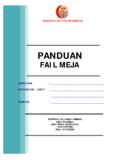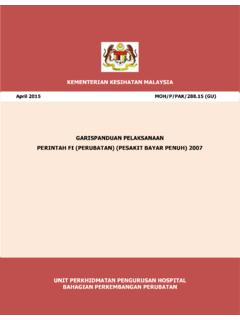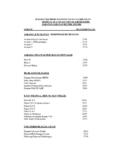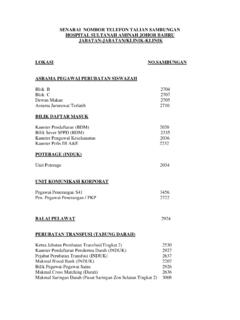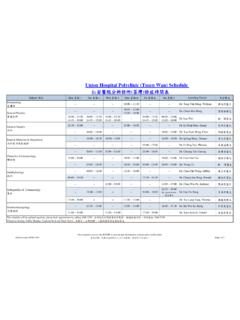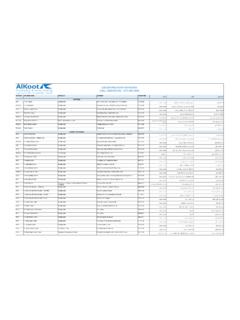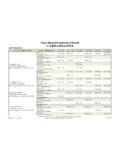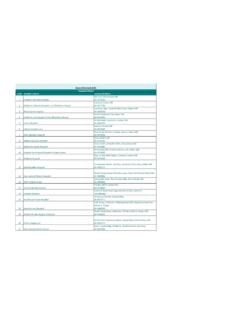Transcription of HOSPITAL SULTANAH AMINAH JOHOR BAHRU
1 HOSPITAL SULTANAH AMINAH JOHOR BAHRU RAPID RESPONSE SYSTEM FOR THE MANAGEMENT OF INTRAINSTITUTIONAL MEDICAL EMERGENCIES PRODUCED BY EMERGENCY AND TRAUMA DEPARTMENT, HOSPITAL SULTANAH AMINAH JOHOR BAHRU . AUTHORED BY, DR MD SAED BIN MIAN, CONSULTANT AND EMERGENCY PHYSICIAN, HEAD OF EMERGENCY AND TRAUMA DEPARTMENT. DR MOHD AMIN BIN MOHIDIN, EMERGENCY PHYSICIAN CODE BLUE SYSTEM 1 FIRST EDITION Content : Page 1. Introduction 2 2. Objectives 3 3. Code Blue for HOSPITAL SULTANAH AMINAH 3 4. Code blue teams of HOSPITAL SULTANAH AMINAH 5 5. Phases of Code Blue Rapid Response System 6 i. Alert System 6 ii. Immediate Intervention at Incident Site 6 Blue team arrival 7 Care 8 v. Equipment and training 8 6. Code Blue team composition 9 7. Education, Training and Quality Assurance 10 8. Communication 10 9. Coordination with other departments 10 10.
2 Budget Requirements 10 11. Dry run 11 12. Target clientele and areas 11 13. Code Blue Algorithm 13 14. Emergency Department Phone Directory 14 2 CODE BLUE Emergency Medical Management A Rapid Response System 1. Introduction: Code Blue is a rapid response system for emergency resuscitation and stabilization of medical emergency situations that happen within the HOSPITAL area. These medical emergencies require immediate attention. A Code Blue is to be initiated immediately whenever a person is found in cardiac or respiratory arrest (unresponsive, pulseless, or not breathing) the patient needs cardiopulmonary resuscitation (CPR). Code Blue Rapid Response System is established to ensure that all critical medical emergencies are provided with resuscitation and stabilization ALMOST immediately. The Response System is in 2 phases.
3 I) The initial response (first responder) should always be from the HOSPITAL personnel who are at the vicinity; where Basic Life Support (BLS) service should be provided. ii) The second response (second responder) will be from a specialized and well trained team from a department identified by HOSPITAL authorities. The response system is being conducted with a specific response time based upon the service quality standards which have been determined by the HOSPITAL authorities. To enable the proper establishment of such system, the following is essential: i) All personnel in the HOSPITAL should be trained with BLS skills to enable the initiation of critical basic life support at the incident site. ii) Basic Life Support equipment should be placed in all strategic locations within the HOSPITAL grounds, for example HOSPITAL lobby, waiting areas in polyclinics and other high risk areas; where the equipment is portable or mobile to enable rapid response.
4 Once there is a Code Blue, a team of doctors and paramedics (medical assistants and staff nurses), often a designated "code-team", will rush to the patient taking life-saving measures. The team uses a crash cart , wheelchair/stretcher, which contains important aids such as a defibrillator, intubation equipment, suction, oxygen, ambubag, resuscitation drugs (adrenaline, atropine, lignocaine) and an setup to stabilize the patient. The team will utilize BLS and Advanced Cardiac Life Support (ACLS) skills to resuscitate patients. 3 In areas where patients are routinely admitted, there should be a crash cart or trolley, containing specialized life support equipment, available. If a Code Blue is called in an area without a crash cart , the designated code blue team will bring the crash cart or resuscitation kit. A code blue is called for patients who do not have an advance healthcare directive indicating otherwise.
5 2. Objectives of Code Blue: 1. To provide rapid (almost immediate) resuscitation and stabilization for victims of medical emergencies or cardio-respiratory arrest within the HOSPITAL grounds. 2. To establish well-trained and equipped medical emergency (code blue) teams that can be deployed rapidly from pre-determined departments to the medical emergency site. 3. To initiate training in BLS skills and use of Automated External Defibrillators (AEDs) for all HOSPITAL staff whether clinical or non clinical based. 4. To initiate placement of BLS equipment in various strategic locations within the HOSPITAL grounds to facilitate a rapid response for medical emergencies. 5. To make the HOSPITAL safe for emergency. 3. Code Blue for HOSPITAL SULTANAH AMINAH : A Code Blue response for the entire HOSPITAL SULTANAH AMINAH area cannot be handled by any particular department by itself, for example the Emergency and Trauma Department (ETD), due to the logistic difficulties for example difficult terrain and unreasonable distance.
6 If the Code Blue team is handled by the ETD alone, their team members may not be able to attend immediately to emergencies occurring far away from the ETD, for example the Bakawali and Teratai building, Balai Pelawat, and Specialist Clinic/Polyclinic or even HOSPITAL administration office. A Code Blue response time ideally should be within a pre-determined service standard in order to improve chances of successful resuscitation; for example, 5 minutes from activation of Code Blue to arrival of Code Blue team at the incident site. Therefore, each department has the responsibility of initiating resuscitation and basic life support for victims of medical emergencies in their workplace and surrounding area. This initial phase of the Code Blue response is the responsibility of each department as all these departments have doctors, paramedics or allied health personnel.
7 For example, the polyclinic team should cover HOSPITAL Director Office; Imaging and Diagnostic department should cover their own department, Chest team clinic should 4 cover the Teratai building and the Orthopaedic department should cover the main HOSPITAL block. The ETD will cover the non-clinical areas or departments in the hospitals such as main HOSPITAL lobby, Record department and overall coverage of the entire HOSPITAL grounds. The table in Section 4 shows the proposal distribution of response teams by department and the area of coverage Each department has to have their own medical emergency response team to deal with any such emergency. The formation of these teams (Code Blue teams), training of its members and provision of basic resuscitation equipment kits will be coordinated by the Emergency and Trauma Department. The level of training (BLS), expertise and resuscitation equipment for all the teams will be standardized.
8 Each team will compose of 3 to 5 members. Basic emergency resuscitation kits, which are easy to transport, should be placed in strategic locations all over the HOSPITAL especially in areas where there is high probability of medical emergencies or where HOSPITAL staff have been trained in BLS skills. At least one basic resuscitation kit should be placed in each department workplace so that the primary response teams can quickly mobilize and utilize the resuscitation equipment. If more kits or advanced resuscitation kits are available, especially if the area of coverage is big, then the effectiveness and response time of the Code Blue teams will be better. Further details on these aspects are described in Sections 5v, 6, 7 and 8. Whenever a Code Blue is activated, the team in charge of the incident site will attend to the emergency immediately, bringing along their basic resuscitation equipment kits.
9 The Emergency Department will still send a Code Blue team to the site of a Code Blue incident once a Code Blue is activated. However, due the previously mentioned logistic difficulties, the response time may be more than 5 minutes. Hence, individual departments or units play a vital role in performing early BLS while waiting for advanced life support care to arrive from ETD. This will improve the victim s chances of survival. It is equally important that all HOSPITAL personnel, especially non-doctors and non-medical, are trained in BLS so that they can also provide early basic life support/Cardiopulmonary Resuscitation (CPR) at the incident site while waiting for the primary response or Code Blue team to arrive, thus also improving chances of good outcome for the medical emergency victims. Training of HOSPITAL staff in BLS skills and the use of AEDs can also be conducted by the ETD.
10 5 4. Code Blue teams of HOSPITAL SULTANAH AMINAH , JOHOR BAHRU . Code Blue teams/Department of Origin and Area of Coverage No Code Blue team of primary responding team (Coordinator) Propose Area of coverage 1 EMERGENCY AND TRAUMA TEAM (Dr. Mohd Amin Mohidin) Emergency Department area, Record Department, Main and L&D building ground floor and Front Parking area, main entrance lobby, Blood Bank, PGMC, Pusat Bersalin and Rose building, Pharmacy, BDM and Unit Hasil. Second responder coverage of HOSPITAL area 2 ORTHOPAEDIC TEAM (Mr. Abdul Kahir bin Misnan) HOSPITAL main block (Level 1 to 6) 3 POLYCLINIC TEAM (Dr Chan Bee Keow) Polyclinic Building (LPPKN, Pantai Medivest, Transportation unit, Integration Store, HOSPITAL Administration Office), Polyclinic Parking and HO mass 4 O&G RESPONSE TEAM (Dr.)
